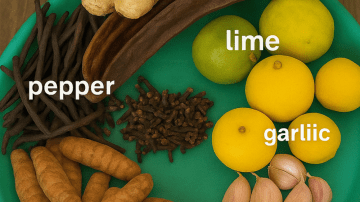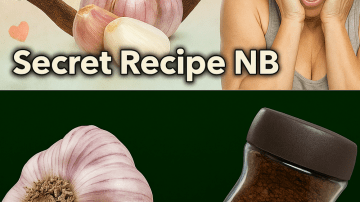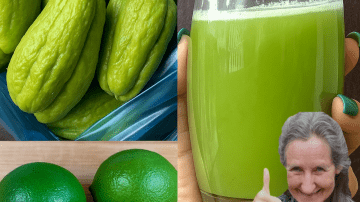Imagine a single root that has fed empires, healed warriors, and starred in royal desserts for over 10,000 years. This isn’t some forgotten superfood trend—it’s taro, the underground king that’s been quietly revolutionizing plates from Hawaiian luaus to Michelin-star kitchens. What makes this purple-fleshed wonder so irresistibly powerful? Keep reading, because what you’re about to discover will transform your grocery list forever.

🌿 The Nutritional Fortress Hidden Beneath Purple Skin
Peel back taro’s unassuming exterior and you’ll uncover a treasure trove of health benefits that make kale look like yesterday’s news. This ancient root isn’t just filling—it’s strategically designed by nature to fuel human excellence.
Fiber forms the foundation of taro’s superpower status. A single cup delivers more dietary fiber than oatmeal, creating a slow-burn energy source that keeps blood sugar stable for hours. Athletes in ancient Polynesia relied on this steady fuel during epic ocean voyages that lasted weeks.
Vitamin C surges through every bite, with concentrations rivaling oranges. But taro goes further—pairing this immune warrior with vitamin E for double antioxidant protection. Your skin drinks in this combination, fighting free radicals while collagen production accelerates.
Potassium flows abundantly, more than bananas by weight. This mineral masterpiece regulates blood pressure naturally while preventing muscle cramps that plague weekend warriors. Magnesium joins the party, calming nerves and strengthening bones in ways that calcium alone never could.
🌶️ The Low Glycemic Revolution
Here’s where taro destroys modern diet myths: its complex carbohydrates release energy gradually, preventing the crashes that derail productivity. Diabetes researchers in Asia now study taro as a template for sustainable blood sugar management. The root’s resistant starch feeds beneficial gut bacteria, creating a prebiotic effect that expensive supplements desperately try to replicate.
🍠 Culinary Shapeshifter: From Street Food to Fine Dining
Taro doesn’t just adapt—it transforms. Its subtle vanilla-nut flavor profile shifts dramatically based on preparation, making it the ultimate culinary chameleon.
In Manila’s bustling markets, vendors pound steamed taro with coconut milk to create binagol, a dessert that tastes like vanilla custard grew up in the tropics. Michelin chefs in Singapore reduce taro puree with duck fat, creating a velvet sauce that elevates roasted poultry to religious experiences.
The root’s starch content creates natural thickness without flour. Caribbean callaloo gains its signature body from taro leaves, while Filipino laing achieves creamy decadence through hours of slow coconut reduction. Japanese korokke finds its perfect crunch-to-cream ratio when taro replaces potato.

🎨 Purple Majesty: The Instagram-Worthy Superfood
Social media exploded when purple taro entered bubble tea. The vibrant hue comes from anthocyanins—powerful antioxidants also found in blueberries but at higher concentrations. These compounds protect brain cells, potentially reducing cognitive decline as we age.
Bakers now swirl purple taro paste through croissant dough, creating galaxy-patterned pastries that sell out before sunrise. Ice cream artisans in Los Angeles craft taro flavors so nuanced they require three different cooking methods to capture the root’s full personality.
🌺 Sacred Geography: Where Taro Becomes Legend
The plant’s journey reveals human history itself. Polynesian voyagers carried taro corms in their canoes, planting them on every discovered island. Hawaiian kalo fields, called lo’i, represent sophisticated irrigation systems that sustained populations for centuries before European contact.
In West Africa, taro leaves wrap fermented fish during festivals, their slight astringency balancing rich flavors. Egyptian farmers still grow varieties documented in 3,000-year-old hieroglyphs. The root’s ability to thrive in flooded conditions made it essential for civilizations built around annual river floods.
🍃 The Leaf Revolution: Greens That Fight Back
While roots steal the spotlight, taro leaves deserve their own documentary. These heart-shaped powerhouses contain more beta-carotene than carrots, converting efficiently to vitamin A for eye health and immune function.
Proper preparation transforms potential irritation into culinary gold. Caribbean grandmothers teach the secret: cook leaves with acidic ingredients like tomatoes or tamarind to neutralize calcium oxalate crystals. The result? Silky greens that absorb flavors like culinary sponges.
🌱 Garden Royalty: Growing Your Own Empire
Taro demands respect but rewards devotion. The plant creates living architecture—elephant-ear leaves forming natural canopies that cool surrounding air by up to 10 degrees. Urban farmers in containers harvest baby taro after just four months, enjoying fresh roots while larger plants continue producing.
Wetland restoration projects now incorporate taro for its water-purifying abilities. The plant filters heavy metals while preventing soil erosion, making it a cornerstone of sustainable agriculture in flood-prone regions.
🍴 Mastering Taro: Professional Techniques Revealed
Peeling Protocol: Wear gloves—calcium oxalate protects the plant in nature but irritates human skin. Score the skin lengthwise, then peel in strips under running water. The flesh oxidizes quickly, so submerge cut pieces in acidulated water immediately.
Cooking Hierarchy: Boiling extracts bitterness while preserving nutrients. Steaming maintains structural integrity for salads. Roasting at 425°F caramelizes natural sugars, creating crispy edges that rival potatoes.
Flavor Architecture: Taro absorbs rather than competes. Build layers—start with aromatics in coconut oil, add taro midway through cooking, finish with fresh herbs. The root’s mild personality amplifies supporting ingredients.
🥞 Global Recipe Matrix
Hawaiian Poi 2.0: Ferment mashed taro for three days, then blend with fresh coconut cream and macadamia nuts. The probiotic content rivals yogurt while tasting like tropical pudding.
Korean Taro Gnocchi: Replace potato with equal parts taro and rice flour. The resulting dumplings hold sauce in microscopic crevices, creating perfect bite distribution.
West African Fufu Upgrade: Combine taro with cassava in a 1:3 ratio. The taro prevents stickiness while adding nutritional depth to this daily staple.
⚡ Performance Fuel: The Athlete’s Secret Weapon
Endurance athletes in Okinawa consume taro before 100-mile ultramarathons. The root’s electrolyte profile—potassium, magnesium, and natural sodium—prevents cramping during extreme exertion. Recovery shakes now feature taro powder for its anti-inflammatory compounds.
🌍 Sustainability Superstar
Taro requires 50% less water than rice while yielding comparable calories per acre. The plant’s perennial nature means fields produce for years after initial planting. In Pacific islands facing rising seas, salt-tolerant taro varieties ensure food security where other crops fail.
✨ The Future of Feasting
Molecular gastronomists experiment with taro caviar—spherified taro puree that bursts with coconut essence. Plant-based meat companies use taro starch for its superior binding properties, creating textures indistinguishable from animal products.
Beauty brands extract taro enzymes for gentle exfoliation. The same compounds that protect the plant in soil now renew human skin, reducing hyperpigmentation without harsh chemicals.
🥗 Your Taro Journey Begins Today
Start simple: replace half the potatoes in your mash with boiled taro. The creamy texture improves while nutrition skyrockets. Graduate to taro chips baked with rosemary and sea salt—each bite delivers crunch without guilt.
Visit Asian markets early Saturday mornings when fresh taro arrives. Look for firm roots with minimal scarring. The purple varieties cost more but deliver Instagram-worthy results. Frozen peeled taro works beautifully for beginners, eliminating prep anxiety.
🌟 The Eternal Root
Taro isn’t riding a trend—it’s the trend that never ended. From ancient Egyptian medical papyri prescribing taro poultices to modern nutrigenomics research confirming its gene-expression benefits, this root has earned its place at humanity’s table.
Every time you cook taro, you’re participating in a 10,000-year conversation between humans and plants. The root that sustained voyages across oceans now powers your morning smoothie. The leaf that shaded Polynesian children now shades your urban balcony.
Pick up one taro root this week. Feel its weight—heavier than potato, denser with possibility. Cook it simply at first, then experiment wildly. Document your creations. Share them. Become part of the story that began when the first farmer discovered this purple miracle growing wild in tropical wetlands.
The empire of taro awaits your coronation. Your kitchen is the new kingdom, and this ancient root is ready to serve.






